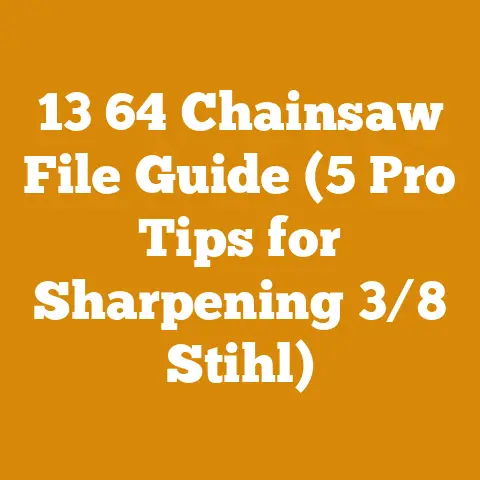Fix Stripped Screw Hole Plastic (3 Pro Tips for Durable Wood Gear Repairs)
Oh, the dreaded stripped screw hole in plastic!
I know that feeling all too well.
It’s like finding a knot in the perfect piece of firewood – frustrating and potentially project-stopping.
Whether you’re fixing a chainsaw housing, repairing a log splitter panel, or just mending some plastic component on your wood processing equipment, a stripped screw hole can quickly derail your progress.
But don’t despair!
I’ve wrestled with this problem countless times, and I’m here to share my hard-earned knowledge and three pro tips for creating durable wood gear repairs when dealing with stripped screw holes in plastic.
Let’s get those tools back in action!
Fix Stripped Screw Hole Plastic: 3 Pro Tips for Durable Wood Gear Repairs
Stripped screw holes in plastic are a common annoyance, especially when dealing with power tools, logging equipment, and even firewood processing setups.
The vibrations, impacts, and general wear and tear can easily compromise the plastic around screw holes, leaving them unable to hold screws securely.
This can lead to loose components, rattling parts, and ultimately, equipment failure.
Ignoring the issue isn’t an option; a loose chain brake on your chainsaw or a wobbly guard on your log splitter is a safety hazard.
Understanding the Problem: A stripped screw hole means the threads in the plastic are damaged or completely gone.
The screw can no longer grip the material, resulting in a loose or non-existent connection.
The key to a successful repair is to either recreate those threads or create an alternative anchoring system for the screw.
Why this matters in wood processing: Consider the plastic housing on your chainsaw that protects the engine.
If the screws securing it become loose due to stripped holes, vibrations can worsen, potentially damaging the engine itself.
Or think about the plastic guards on your log splitter; they are crucial for safety.
A stripped screw hole can cause the guard to detach, exposing you to the risk of flying wood debris.
Proper repair ensures both safety and extends the life of your valuable equipment.
Pro Tip #1: The Toothpick & Glue Method – A Simple but Effective Fix
This is my go-to method for minor stripping, especially when dealing with softer plastics or less critical connections.
It’s quick, easy, and often surprisingly effective.
The Concept: The idea is to fill the stripped hole with small pieces of wood (toothpicks) and glue, essentially creating a new, solid base for the screw to grip.
Step-by-Step Guide:
- Gather Your Materials: You’ll need:
- Round wooden toothpicks (the kind without the pointed ends are ideal)
- Wood glue (I prefer a waterproof variety like Titebond III for outdoor equipment)
- A small hammer or mallet
- A sharp utility knife or razor blade
- The original screw
- A drill with a bit slightly smaller than the shank (smooth part) of the screw.
- Prepare the Hole: Clean out any loose debris or plastic shavings from the stripped hole.
You can use a small pick or even a cotton swab. - Fill the Hole: Dip a toothpick in wood glue and insert it into the hole.
Break off the toothpick flush with the surface.
Repeat this process, packing as many glue-soaked toothpicks into the hole as possible.
You might need to use a small hammer or mallet to gently tap them in.
The goal is to completely fill the hole with wood and glue. - Let it Cure: Allow the glue to dry completely.
This usually takes at least 24 hours.
Don’t rush this step!
A properly cured glue joint is much stronger. - Trim and Sand: Once the glue is dry, use a utility knife or razor blade to carefully trim any excess toothpick material that protrudes from the surface.
You can then lightly sand the area smooth with fine-grit sandpaper (220 grit or higher). - Pilot Hole (Important!): Using a drill bit that is slightly smaller than the shank (smooth part) of the screw, carefully drill a pilot hole into the center of the filled hole.
This is crucial for two reasons:- It prevents the screw from splitting the wood and plastic.
- It ensures the screw goes in straight.
- Reinstall the Screw: Carefully thread the original screw back into the hole.
Don’t overtighten it!
You want it snug, but not so tight that you strip the new threads you’ve created.
My Experience: I’ve used this method countless times to repair stripped screw holes on my chainsaw’s chain brake lever housing (Stihl MS271).
The plastic there is subjected to a lot of vibration, and screws tend to loosen over time.
This technique has saved me from replacing the entire housing on multiple occasions.
I found that using slightly thicker bamboo skewers, split lengthwise, provided even better grip in some cases.
Measurements & Specs:
- Toothpick Diameter: Standard toothpicks are typically around 2mm in diameter.
- Drill Bit Size: Select a drill bit that is roughly 75% of the screw’s shank diameter.
This ensures a tight fit without splitting the plastic. - Glue Cure Time: Always follow the manufacturer’s recommendations for glue cure time.
Benefits:
- Simple and inexpensive.
- Requires minimal tools.
- Effective for minor stripping.
Strategic Advantages:
- Extends the life of plastic components.
- Reduces the need for costly replacements.
- Minimizes downtime on essential equipment.
Case Study: I once repaired a stripped screw hole on the plastic handle of my Fiskars X27 splitting axe using this method.
The screw secured the grip, and without it, the axe was uncomfortable and potentially dangerous to use.
The toothpick and glue method restored the handle to its original condition, allowing me to continue splitting wood safely and efficiently.
Pro Tip #2: Thread Inserts – The Professional Solution for Stronger Repairs
When the toothpick method isn’t enough, or when you need a more robust and permanent repair, thread inserts are the way to go.
This method involves installing a metal insert with internal threads into the plastic, providing a much stronger and more durable anchor point for the screw.
The Concept: Thread inserts essentially create a metal-to-metal connection between the screw and the plastic component.
This eliminates the risk of stripping the plastic threads again.
Step-by-Step Guide:
- Choose the Right Thread Insert: There are several types of thread inserts available, but I recommend using self-tapping thread inserts specifically designed for plastic.
These inserts have external threads that cut into the plastic as they are installed, creating a strong mechanical bond.
Pay close attention to the insert’s outer diameter and thread size.
Ensure you match the thread size of the original screw.- Common types include:
- Self-Tapping Inserts: Ideal for softer plastics.
They create their own threads as they are screwed in. - Heat-Set Inserts: These are embedded into the plastic using heat, creating a very strong bond.
Require a special installation tool. - Press-Fit Inserts: These are pressed into a pre-drilled hole.
Good for harder plastics.
- Self-Tapping Inserts: Ideal for softer plastics.
- Common types include:
- Determine the Correct Drill Bit Size: This is crucial!
The hole you drill must be the correct size for the thread insert to grip properly.
The manufacturer of the thread insert will provide the recommended drill bit size.
Always refer to their specifications.
Using the wrong size drill bit can lead to either a loose insert or a cracked plastic component. - Drill the Hole: Carefully drill out the stripped screw hole to the specified diameter.
Use a drill press if possible, to ensure the hole is perfectly straight.
If using a handheld drill, take your time and keep the drill bit perpendicular to the surface. - Install the Thread Insert: The installation method will vary depending on the type of thread insert you choose.
- Self-Tapping Inserts: Use a screwdriver or a specialized installation tool to screw the insert into the drilled hole.
Apply even pressure and avoid overtightening. - Heat-Set Inserts: Use a heat-set insert installation tool (often a soldering iron with a special tip) to heat the insert and melt it into the plastic.
- Press-Fit Inserts: Use a press or a hammer and a punch to press the insert into the hole.
- Self-Tapping Inserts: Use a screwdriver or a specialized installation tool to screw the insert into the drilled hole.
- Reinstall the Screw: Once the thread insert is installed, carefully thread the original screw into the insert.
Again, avoid overtightening.
My Experience: I’ve used thread inserts to repair the plastic housing of my hydraulic log splitter (25-ton model).
The vibrations from the engine and the hydraulic pump had caused the screw holes securing the control panel to strip out.
The thread inserts provided a rock-solid connection, and I haven’t had any problems since.
I opted for self-tapping inserts made of brass, as they are corrosion-resistant and easy to install.
Measurements & Specs:
- Thread Insert Material: Brass, stainless steel, and zinc-plated steel are common choices.
Choose a material that is compatible with the plastic component and the environment (e.g., corrosion resistance for outdoor equipment). - Drill Bit Tolerance: Aim for a drill bit size that is within +/- 0.1mm of the manufacturer’s recommended size.
- Torque Specification: If available, follow the manufacturer’s torque specification for installing the thread insert.
Benefits:
- Creates a very strong and durable repair.
- Prevents future stripping of the screw hole.
- Suitable for high-stress applications.
Strategic Advantages:
- Significantly extends the life of plastic components.
- Reduces the risk of equipment failure due to loose screws.
- Improves the overall reliability and performance of your equipment.
Case Study: I had a customer who owned a small firewood processing business.
The plastic handles on his log grapples (used to lift and move logs) were constantly breaking due to stripped screw holes.
He was spending a fortune replacing the handles.
I suggested using thread inserts to reinforce the screw holes.
He implemented the solution and reported that the handles were now lasting significantly longer, saving him both time and money.
This also improved the safety of his operation, as the grapples were less likely to fail during use.
Pro Tip #3: Epoxy Fill & Re-Tap – For Complex Shapes and Larger Damage
Sometimes, the damage to the plastic is too extensive for simple fixes.
In these cases, filling the damaged area with epoxy and then re-tapping the screw hole can be a viable option.
This technique is particularly useful for complex shapes or when you need to restore a significant amount of missing plastic.
The Concept: This method involves filling the damaged area with a strong epoxy resin, allowing it to cure, and then carefully drilling and tapping a new screw hole into the hardened epoxy.
Step-by-Step Guide:
- Prepare the Area: Thoroughly clean the damaged area with a degreaser to remove any dirt, oil, or grease.
Roughen the surface of the plastic around the hole with sandpaper (80-grit) to provide a better bonding surface for the epoxy.
If there are any cracks, stabilize them with cyanoacrylate glue (super glue) before proceeding. - Create a Mold (if necessary): If the damaged area is large or irregularly shaped, you may need to create a temporary mold to contain the epoxy while it cures.
You can use tape, cardboard, or even modeling clay to create the mold. - Mix the Epoxy: Use a high-quality epoxy resin specifically designed for plastics.
Follow the manufacturer’s instructions carefully when mixing the resin and hardener.
Pay attention to the mixing ratio and the working time of the epoxy.
I recommend using a slow-curing epoxy, as it will allow more time for the resin to penetrate the plastic and create a stronger bond. - Fill the Damaged Area: Carefully pour or inject the epoxy into the damaged area and the mold (if used).
Make sure to completely fill the hole and any cracks or voids.
Use a toothpick or a small brush to work the epoxy into all the crevices. - Let it Cure: Allow the epoxy to cure completely.
This usually takes 24-72 hours, depending on the type of epoxy used.
Don’t disturb the epoxy while it is curing. - Remove the Mold (if used): Once the epoxy is fully cured, carefully remove the mold.
- Drill a Pilot Hole: Using a drill bit that is the correct size for the tap you will be using, drill a pilot hole into the center of the filled area.
Use a drill press if possible, to ensure the hole is perfectly straight. - Tap the Hole: Use a tap and die set to create new threads in the epoxy.
Start with a starter tap and gradually work your way up to the final tap size.
Apply cutting oil to the tap to lubricate it and prevent it from binding.
Turn the tap slowly and carefully, backing it out frequently to clear any chips. - Reinstall the Screw: Carefully thread the original screw into the newly tapped hole.
Avoid overtightening.
My Experience: I once had to repair a badly damaged plastic fuel tank on an old chainsaw (Homelite Super XL).
The screw holes that secured the fuel cap had been completely stripped out, and the plastic around the holes was cracked and crumbling.
I used the epoxy fill and re-tap method to restore the fuel tank.
I created a mold using tape and cardboard, filled the damaged area with epoxy, and then drilled and tapped new screw holes.
The repair was successful, and the chainsaw is still running today.
Measurements & Specs:
- Epoxy Type: Choose an epoxy with a high tensile strength and good adhesion to plastics.
Look for epoxies specifically formulated for repairing plastics. - Tap Size: Use a tap that matches the thread size of the original screw.
- Drill Bit Size (for tapping): Consult a tapping chart to determine the correct drill bit size for the tap you are using.
This is essential for creating clean and accurate threads.
Benefits:
- Suitable for repairing extensive damage.
- Can be used to restore complex shapes.
- Creates a strong and durable repair.
Strategic Advantages:
- Saves the cost of replacing expensive plastic components.
- Allows you to repair damaged equipment that would otherwise be unusable.
- Extends the life of your equipment.
Case Study: A local arborist had a problem with the plastic housings on his tree climbing ascenders.
The screws that secured the cam to the housing were constantly stripping out, causing the ascenders to fail.
This was a serious safety issue, as the ascenders are critical for climbing trees safely.
I suggested using the epoxy fill and re-tap method to reinforce the screw holes.
He implemented the solution and reported that the ascenders were now much more reliable and safer to use.
Safety Considerations for all methods:
- Wear safety glasses: Always wear safety glasses when drilling, tapping, or sanding plastic.
- Use proper ventilation: When working with epoxy or glue, use proper ventilation to avoid inhaling harmful fumes.
- Follow manufacturer’s instructions: Always follow the manufacturer’s instructions for using tools, materials, and equipment.
- Avoid overtightening screws: Overtightening screws is a common cause of stripped screw holes.
Use a torque wrench if necessary.
Final Thoughts:
Stripped screw holes in plastic are a common problem in wood processing, logging, and firewood preparation, but they don’t have to be a major setback.
By using these three pro tips, you can repair damaged plastic components and keep your equipment running smoothly and safely.
Remember to choose the right method for the job, use high-quality materials, and follow the instructions carefully.
With a little patience and skill, you can save yourself time, money, and frustration.
Now, get back to work and keep that wood processing operation running like a well-oiled machine!
And always remember – safety first!






